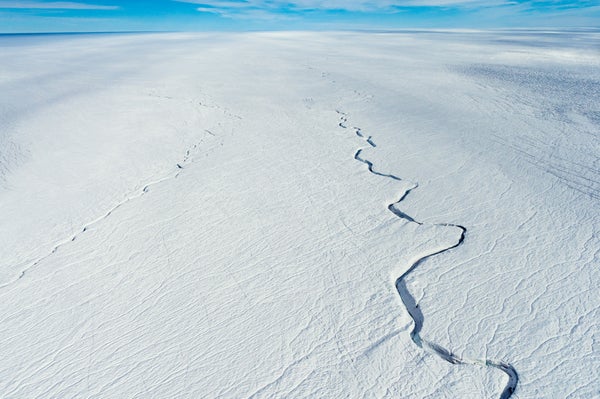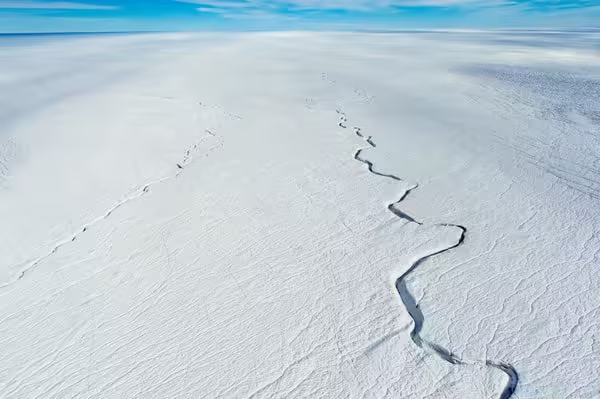August 19, 2024
2 Time required to read
Mapping the complex, hidden terrain one mile beneath Greenland’s ice sheet
New map of Greenland suggests how geology shifts and twists beneath the ice

Fracture lines in the Greenland ice sheet.
Jason Edwards/Getty Images
Scientists have been trying for decades to uncover the true geology of Greenland, an island one-third the size of Australia and almost entirely hidden beneath a mile-deep ice sheet. Geophysical Research LettersScientists have produced a new map showing the geological details and dramatic landforms hidden beneath the ice.
Many people think of Greenland’s land mass as “one big, rigid plate that all moves the same,” says study co-author William Colgan, a glaciologist at the Geological Survey of Denmark-Greenland. But the land mass may not be uniform, and understanding how individual geological features move and twist beneath the ice could help improve GPS accuracy in scientific research and mineral exploration. Mapping Greenland’s actual geology could also help predict ice sheet stability, because young volcanic bedrock transmits more geothermal heat to the ice sheet than older rocks.
Researchers created the now widely accepted geological map of Greenland in 2009, but much of it is based on exposed rocks along the island’s coast. This method may work for smaller, narrower landmasses, but not for northern Greenland, where the coasts are more than 500 miles apart and there can be dramatic geological changes in between. “If you take North America, put a giant ice sheet on top of it, give us the geology of New York, Maryland, and California, and ask us to (determine) the geology of Nebraska, it’s going to be hard to make an accurate guess,” says geologist Sridhar Anandakrishnan of Pennsylvania State University.
Supporting science journalism
If you enjoyed this article, please support our award-winning journalism. Subscribe. By purchasing a subscription, you help ensure a future of influential stories about the discoveries and ideas shaping the world today.
According to the researchers, since 2009, a proliferation of new satellites, radar systems and seismic stations has steadily increased the datasets available for geological mapping. To create the new Greenland map, Colgan and his team crunched available data on changes in gravity, magnetics, crustal thickness, bedrock topography, seismic wave propagation and ice surface characteristics across the landmass. The experts analyzed each measurement and noted the boundaries between areas of significant change.
These overlapping boundaries suggest that Greenland’s ice harbors three previously unidentified geological provinces, or “provinces,” each with its own unique characteristics. One, for example, appears to be of volcanic origin and relatively new; the other has an undulating topography that appears to have been formed from extensive hills and valleys. The researchers also found thousands of ice surface features that likely represent subglacial valleys, many of which are hundreds of miles long and run parallel to one another. They also noticed that ice streams move faster at the boundaries of some geological provinces, suggesting that they are eroding those regions differently.
Measurements along some of the boundaries have been left to expert guesswork, but survey data continues to come in and Colgan is optimistic: He hopes the next time his team tackles this type of map they’ll have a larger dataset and better artificial intelligence analysis tools.


1 Comment
Your point of view caught my eye and was very interesting. Thanks. I have a question for you.